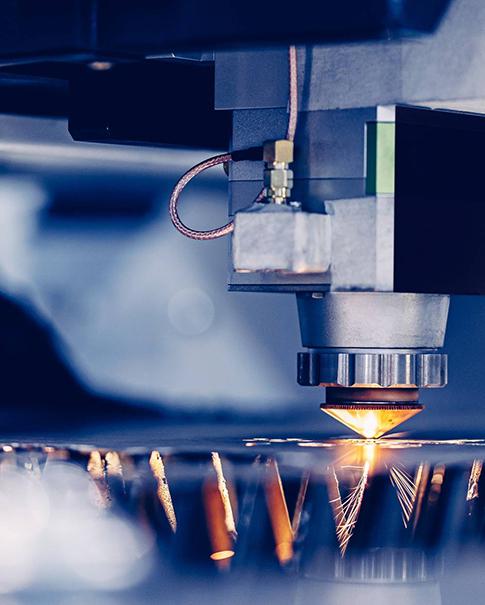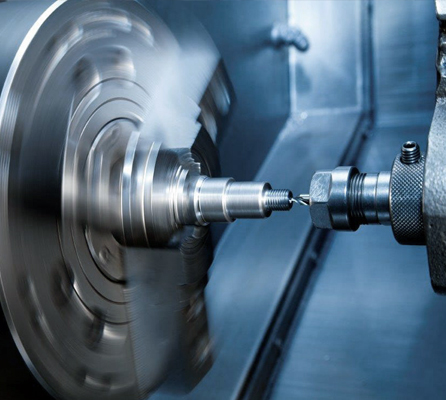CNC 냉각수 설명: 유형, 유지 관리 및 안전
Sep 30, 2025
냉각수는 CNC 기계 주변에 튀는 단순한 액체가 아닙니다. 깨끗하고 정확한 절삭과 불량품의 차이를 만드는 중요한 요소입니다. 가공 과정에서 절삭유, 미스트, 특수 윤활제 등 CNC 냉각수는 열을 제어하고 공구 수명을 연장하며 칩 제거를 용이하게 합니다. 흔히 하는 오해가 있죠? 냉각수의 역할이 냉각뿐이라고 생각하는 사람들이 있습니다. 하지만 실제로는 냉각수보다 훨씬 더 많은 역할을 합니다. 공구 윤활, 칩 제거, 심지어 표면 조도 향상까지 말이죠. 적절한 냉각수를 사용하지 않으면 온도 급상승 위험뿐 아니라 형상, 부품 선명도, 그리고 작업자 안전까지 위협받게 됩니다. CNC 기계에 적합한 냉각수를 선택하는 것은 단순히 기술적인 측면을 넘어 정밀도, 부품 품질, 작업자 안전, 그리고 전반적인 프로젝트 비용에 영향을 미칩니다. 잘못된 선택은 절삭날 마모, 공구 무뎌짐, 그리고 지속적인 가동 중단으로 이어질 수 있습니다. Keso에서는 단순히 이론만 다루는 것이 아니라, 저희 기계 기술자들이 매일 냉각수 설정을 직접 진행하고 있으며, 이 가이드는 그들의 현장 경험을 바탕으로 작성되었습니다. 알루미늄, 강철 또는 플라스틱 등 어떤 소재를 절단하든, 이러한 통찰력은 냉각수가 가공 공정에 실제로 어떤 영향을 미치는지 이해하는 데 도움이 될 것입니다. CNC 기계 냉각수의 종류 및 용도 (아이스톡) 모든 CNC 기계 냉각수가 동일하게 만들어지는 것은 아니며, 기계공들은 실제 환경에서 어떤 냉각수가 효과적인지에 대해 확고한 의견을 가지고 있는 경우가 많습니다. 결국 냉각과 윤활의 균형을 맞추고 소재에 맞는 적절한 조합을 선택하는 것이 중요합니다. 수성 냉각수 vs. 유성 냉각수 유형강점약점가장 적합한수성뛰어난 냉각, 칩 플러싱, 저렴한 가격윤활성이 낮고, 잘못 관리하면 녹이 슬 위험이 있습니다.알루미늄, 플라스틱, 일반 가공석유 기반뛰어난 윤활성으로 공구 가장자리를 보호합니다.냉각이 잘 안되고 고속에서는 연기가 날 수 있음강철, 티타늄, 고강도 절단 합성, 반합성 및 순수 오일 옵션합성 냉각수 —> 오일 성분이 없는 100% 수성 냉각수입니다. 열 제어 및 시야 확보에 효과적이지만 윤활성이 떨어집니다.반합성 냉각수 —> 물과 오일의 혼합물. 대부분의 작업장 환경에서 사용 가능한 "중간 단계" 옵션입니다.순수 오일(스트레이트 오일) —> 100% 오일, 견고한 금속의 공구 수명과 표면 마감에 탁월하지만, 관리하기 어렵고 비용이 많이 듭니다. 기계공들이 말하는 것기계 가공 포럼과 작업 현장에서는 안정성을 위해 항공우주 작업장에 대한 충성도가 높다는 이야기를 많이 들을 수 있습니다. 선호도는 다양하지만 주제는 명확합니다. 예산뿐만 아니라 작업 부하에 맞는 냉각수를 선택하세요.~ 안에 고속 가공냉각수 선택은 단순히 도구를 시원하게 유지하는 것만이 아니라, 깨끗한 마감을 얻을 수 있느냐, 아니면 도구가 빨리 마모될 수 있느냐를 결정합니다. CNC 냉각수는 얼마나 자주 교체해야 합니까?(아이스톡) 냉각수 교체에 대한 단일 시계는 없으며, 작업장 크기, 재료 혼합, 기계 작동 빈도에 따라 달라집니다.대량 생산 매장 냉각수의 혼합물은 계속 사용하면 더 빨리 분해되므로 일반적으로 6~12주마다 냉각수를 교체하거나 순환시켜야 합니다.중소 규모 작업장 여과와 모니터링을 철저히 한다면 3~6개월까지 늘어날 수 있습니다.소량 생산 또는 프로토타입 제작 매장 때로는 6~12개월 동안 같은 냉각수를 사용해야 하지만, 제대로 관리해야만 합니다. 냉각수 교체 시기를 알려주는 신호그 썩은 냄새, 신 냄새 기계공들이 구역질을 하는 건 박테리아 증식이에요.슬러지 또는 기름 잔류물 표면에 떠 있는.눈에 보이는 "꽃”(거품이나 탁함)은 통제되지 않은 박테리아로 인해 발생합니다.도구는 둔화 평소보다 빨리 진행되거나, 부품의 표면 마감이 좋지 않은 경우가 있습니다. 엔지니어가 추천하는 것우리 기계공들은 간단한 습관으로 냉각수를 건강하게 유지합니다.통기 산소가 흐르게 하고 박테리아를 억제합니다.여과 시스템 미세한 조각과 떠다니는 기름을 잡아냅니다.대신 RO/DI수와 혼합 미네랄 축적을 방지하기 위해 수돗물을 마시세요. 냉각수를 관리할 시간이 없다고 걱정하지 마세요. 많은 작업장이 Keso와 같은 서비스에 CNC 가공을 아웃소싱하고 있는데, Keso에서는 유지보수, 모니터링, 기계 준비 과정이 프로세스에 이미 포함되어 있습니다. 냉각수 시스템 유지 관리: 필터 및 노즐(아이스톡) CNC 냉각수 시스템은 가장 약한 부분만큼만 성능이 보장됩니다. 아무리 최고급 냉각수라도 필터, 노즐 또는 펌프를 소홀히 하면 제 성능을 발휘하지 못합니다. 적절한 유지 관리는 냉각수 수명을 연장할 뿐만 아니라 공구 마모, 표면 마감 문제, 그리고 값비싼 가동 중단을 방지합니다. 올바른 CNC 냉각수 필터 설정 선택필터는 펌프와 노즐을 칩, 미분, 그리고 트램프 오일로부터 보호합니다. 적절한 설정은 절단하는 재료와 기계의 작동 주기에 따라 달라집니다.백 필터: 가볍거나 중간 정도의 칩 부하에 적합하며 저렴하고 효과적입니다.사이클론 분리기: 미세한 입자를 처리하는 대량 작업장에 적합합니다.자기 필터: 철 소재를 가공하는 경우 필수입니다. 많은 매장에서는 이러한 기술을 결합하여 다중 보호 기능을 제공하고, 큰 칩과 미세한 입자가 시스템의 중요 부분에 도달하기 전에 포착되도록 합니다. 노즐 배치 및 유형의 중요성냉각수 공급은 예술입니다. 노즐은 공구의 절삭날에 정확하게 닿아야 하는데, 너무 멀리 떨어지면 작업 영역에 물이 넘쳐 아무런 효과도 없습니다. 다음과 같은 제품이 많이 사용됩니다.Loc-Line 모드: 유연하고, 비용이 저렴하며, 재배치가 쉽습니다.고압 노즐: 드릴링, 태핑 및 경화된 재료에 대한 깊은 침투를 제공합니다.미스트/포그 노즐: 홍수 냉각수가 과도하지만 윤활이 여전히 필요할 때 유용합니다. 노즐 방향으로 다이얼을 돌리면 칩 배출과 표면 조도를 크게 향상시킬 수 있습니다. 일부 기계공은 맞춤형 형상을 위해 3D 프린팅 노즐 개조를 실험하기도 합니다. 펌프 건강 팁냉각수 펌프는 시스템의 핵심이며, 이를 소홀히 하면 임펠러가 막히거나 펌프가 완전히 고장날 수 있습니다. 주요 관리 방법은 다음과 같습니다.정기적인 청소: 섬프에서 칩 슬러지와 찌꺼기 찌꺼기를 제거합니다.임펠러 검사: 손상된 블레이드는 흐름과 압력을 감소시켜 공구 수명을 단축시킵니다.슬러지 막힘을 방지하세요: 배플이나 칩 가드를 사용하여 펌프 흡입구에 큰 이물질이 들어가는 것을 방지합니다. 올바르게 유지관리하면 냉각 시스템은 깨끗하고 효율적이며 예측 가능하게 작동하여 긴급 펌프 재구축 대신 사이클 시간과 허용 오차에 집중할 수 있습니다. CNC 기계 냉각수 및 윤활제 사용 모범 사례(아이스톡) CNC 기계용 냉각수는 비율, 수질, 그리고 규율의 과학입니다. 올바른 냉각수 관리 방법은 다음과 같습니다.목표 농축 수준: 대부분의 수용성 냉각수는 8~12% 사이에서 가장 잘 작동하지만, 재질에 따라 조정해야 합니다. 알루미늄은 깨끗한 표면을 위해 낮은 비율을 선호하는 반면, 더 단단한 합금은 윤활을 위해 더 높은 비율의 혼합비가 필요할 수 있습니다.탈이온수(DI)를 사용하세요: RO 또는 DI 수돗물을 사용하면 섬프를 깨끗하게 유지하고, 미네랄 스케일링을 줄이며, 냉각수 수명을 크게 연장할 수 있습니다. 경수 수돗물은 초기 시간은 절약할 수 있지만, 침전물 발생 및 조기 고장으로 인해 비용이 발생할 수 있습니다.일반적인 실수를 피하세요:과도한 농도는 끈적끈적한 잔여물과 도구 오염을 유발합니다.교차 오염(여러 브랜드를 섞거나 잘못된 유체를 첨가하는 것)은 에멀젼을 불안정하게 만듭니다.합성 플러드가 필요한 곳에 순수 오일 등 작업에 적합하지 않은 냉각수 유형을 사용하면 연기, 안개 또는 공구의 완전한 고장이 발생할 수 있습니다. 간단히 말해, 냉각수는 추측이 아닌 정밀성이 요구되는 소모품처럼 다루어야 합니다. 냉각수를 너무 희박하게 사용하거나 여과가 제대로 되지 않은 상태로 사용하면 절삭날 마모와 미세 치핑이 가속화될 수 있습니다. 조기 경고 신호를 발견하는 방법에 대한 자세한 내용은 CNC 가공에서 공구 마모 감지 및 유지 관리 가이드를 참조하십시오. 건강과 안전: CNC 냉각수는 위험한가요?(아이스톡)CNC 냉각수는 기계의 작동을 유지하지만, 기계공들은 냉각수에 따른 단점이 있다는 것을 알고 있습니다. 냉각수 미스트에 장시간 노출되거나 피부에 닿으면 다음과 같은 위험이 발생할 수 있습니다.안개 및 흡입: 지속적인 미스트 노출은 기침, 자극 또는 장기적인 호흡기 질환을 유발할 수 있습니다. 고압 시스템을 운영하는 작업장에서는 미스트 수집기와 전동식 호흡기 사용을 고려해야 합니다.피부 노출: 장갑이나 보호 크림을 사용하지 않으면 피부염이 흔히 발생합니다. 특히 순한 오일이나 오래된 제품을 사용할 때는 항상 손을 보호하세요.화학적 자극물: 일부 냉각수에는 살균제와 안정제가 포함되어 있는데, 이는 효과적이기는 하지만 장기간 노출되면 반응을 일으킬 수 있습니다. 실제 기계공 포럼에서는 "섬프 기침", 만성 발진, 기름막 두통 등 경고성 이야기를 자주 공유합니다. 핵심은 환기, 개인 보호 장비(PPE), 섬프 위생에 투자하는 것입니다. 폐와 피부가 고마워할 것입니다. 일반적인 CNC 냉각수 문제 해결(아이스톡) Keso에서는 양면을 모두 경험했습니다. 어떤 고객은 냉각수 관련 골치 아픈 문제를 완전히 외주로 처리하고, 폐기 및 보충 서비스를 아웃소싱하여 연간 며칠의 가동 중단 시간을 절약합니다. 어떤 고객은 섬프 수명을 연장하는 최적화된 냉각수 레시피를 위해 저희에게 문의하기도 합니다. 어떤 경우든 전문가의 조언은 대개 그만한 가치가 있습니다. 최고의 냉각수 시스템이라도 문제가 발생할 수 있으므로, 오늘 바로 CNC 가공 서비스에 대한 무료 견적을 받아보세요. 하지만 문제가 발생할 경우 다음과 같은 조치를 취해야 합니다.펌프가 과열되거나 멈춤: 일반적으로 슬러지 축적 문제입니다. 섬프를 세척하고 임펠러를 청소한 후, 재가동하기 전에 여과 기능을 개선하는 것을 고려해 보세요.분리 또는 염색: 에멀젼이 분해되는 것은 경수 문제 또는 브랜드 호환성 문제를 의미합니다. 냉각수 브랜드를 바꾸는 것이 효과적인 경우도 있지만, 일반적으로 여과 및 탈이온수(DI Water)를 사용하면 근본 원인을 해결할 수 있습니다.박테리아, 냄새 및 필름: 두려운 "썩은 기름 덩어리" 해결 방법: 트램프 오일용 디스크 스키머. 박테리아의 혐기성 번식을 막기 위한 통기 시스템. 백화 현상이 심각해지기 전에 정기적인 기름 덩어리 청소.냉각수 관리도 기계 관리와 마찬가지입니다. 방치하면 냄새, 얼룩, 가동 중단이 발생합니다. 전문 CNC 냉각수 서비스 vs DIY 선택 시기냉각수 유지 관리는 바쁜 작업장에서 종종 "뒷전"으로 밀려납니다. 하지만 자체 유지 관리와 아웃소싱 중 어떤 것을 선택할지는 전략적인 선택이 될 수 있습니다.사내 DIY: 인력이 충분하다면 비용은 낮지만, 훈련, 정기적인 검사, 그리고 규율이 필요합니다. 한 걸음만 잘못 내딛어도 집수는 생물학적 위험으로 변합니다.전문 서비스: 초기 비용이 더 많이 들지만, 가동 중단 시간을 줄이고 일관된 냉각수 성능을 보장합니다. 일부 공급업체는 안전한 폐기, 필터 교체, 맞춤형 냉각수 혼합 등을 처리합니다. 설계 팁: 냉각수 흐름 및 노즐 배치 최적화스마트한 디자인은 큰 도움이 됩니다.노즐 위치: 항상 공구와 칩 접촉면을 주시하십시오. 여러 개의 조절식 노즐을 사용하면 전체 설정을 재설정하지 않고도 공구 교체에 맞춰 조정할 수 있습니다.스핀들 관통 냉각수: 깊은 드릴링과 대량 칩 배출에 적합합니다. 비용이 많이 들지만, 까다로운 작업에서 공구 수명을 두 배로 늘릴 수 있습니다.고기압 대 홍수:홍수 냉각수는 저렴하고 안정적이며 일반적인 밀링에 적합합니다.고압 시스템은 항공우주 합금과 긴 드릴 작업에 적합하지만 펌프 유지관리 비용이 더 많이 듭니다.경험상 좋은 방법은? 칩을 잘 살펴보는 것입니다. 칩이 깨끗하게 제거되지 않으면 노즐 설정이 제대로 작동하지 않는 것입니다..

